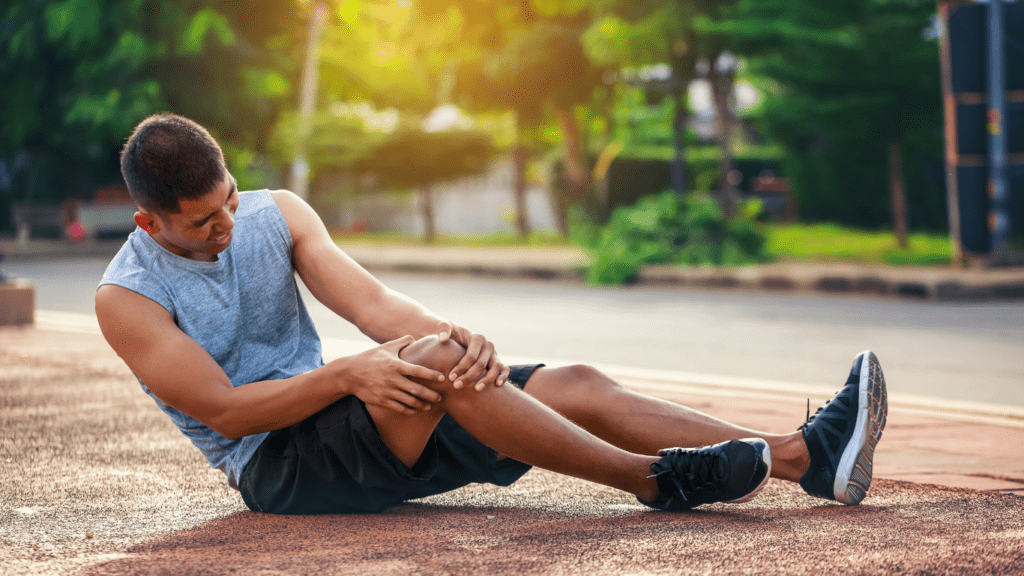Heading out into the great outdoors for a camping adventure is exhilarating, but it’s essential to be prepared for potential mishaps along the way. In my experience, knowing how to prevent and manage common camping injuries can make a significant difference in ensuring a safe and enjoyable trip. From cuts and burns to sprains and insect bites, being equipped with the right knowledge and tools can help you handle unexpected situations with confidence.
In this article, I’ll share practical tips and strategies based on my years of camping experience to help you stay safe and injury-free during your outdoor escapades. By understanding how to prevent accidents and effectively manage injuries when they occur, you can fully embrace the beauty of nature without unnecessary worries. Let’s dive into the essential skills and precautions that every camper should be aware of to have a smooth and secure camping experience.
Importance of Preventing Injuries While Camping
Ensuring safety while camping is crucial for a successful outdoor adventure. I’ll share valuable insights on the significance of preventing injuries during camping trips. Being proactive in injury prevention not only enhances the camping experience but also guarantees a worry-free and enjoyable time in nature. By following essential safety measures and knowing how to address potential injuries, campers can have a seamless and secure camping experience.
Common Camping Injuries to Be Aware Of
Camping can be a fantastic adventure, but being aware of common injuries can help you prepare and prevent mishaps. Here are some key injuries to watch out for and how to manage them effectively:
Burns and First Aid Tips
Burns can happen when cooking over an open flame or dealing with hot camping equipment. It’s crucial to cool the burn with running water for at least 20 minutes and cover it with a clean, dry dressing. Seek medical attention for severe burns or if the burn covers a large area to ensure proper treatment.
Sprains and Strains: Prevention and Treatment
Sprains and strains often occur during outdoor activities like hiking or setting up camp. To prevent these injuries, warm up before any physical activity and ensure proper footwear. If a sprain or strain occurs, remember the RICE method – Rest, Ice, Compression, Elevation. Rest the injured area, apply ice, use compression bandages, and elevate the injury to reduce swelling and pain. If symptoms persist, seek medical help for further evaluation.
Safety Measures to Minimize Camping Risks
Ensuring a safe camping experience is vital for enjoying the great outdoors without any setbacks. By implementing proper safety measures, campers can significantly reduce the risks associated with common camping injuries. Here are essential steps to minimize camping risks:
Proper Equipment Check
Inspect all camping gear before heading out to ensure everything is in good working condition.
Check tent stakes, ropes, camping stoves, and other equipment for any damage or faults.
Verify that first aid kits are well-stocked and medications are not expired.
Stay Informed
Research the camping area in advance to understand potential hazards like wildlife encounters or rough terrains.
Be aware of weather forecasts and pack accordingly to avoid exposure to extreme conditions.
Familiarize yourself with basic first aid procedures and emergency contacts in the area.
Campsite Safety
Choose a campsite that is level, away from hazards like cliffs or bodies of water, and has good drainage.
Keep a safe distance between tents and campfires to prevent accidental burns or injuries.
Store food securely to avoid attracting wildlife to the campsite.
Fire Safety
Follow local regulations and guidelines for campfires, including obtaining any necessary permits.
Keep a safe clearance around the campfire, ensuring no flammable materials are nearby.
Never leave a campfire unattended and always fully extinguish it before sleeping or leaving the campsite.
Personal Safety
Wear appropriate clothing and footwear for the camping activities planned.
Use insect repellent to prevent bug bites and avoid potential infections.
Stay hydrated and well-nourished to maintain energy levels and prevent exhaustion.
By prioritizing safety and being proactive in risk management, campers can enjoy their outdoor adventures with peace of mind. Following these safety measures will help minimize the chances of common camping injuries and ensure a smooth camping experience for all.
First Aid Kit Essentials for Outdoor Adventures
Ensuring you have the right supplies in your first aid kit is crucial for handling emergencies during outdoor activities like camping. Here are some essential items to include in your kit:
- Adhesive bandages in various sizes for minor cuts and scrapes
- Gauze pads and medical tape for larger wounds
- Antiseptic wipes or hydrogen peroxide for cleaning wounds to prevent infection
- Tweezers to remove splinters or ticks
- Instant cold packs for treating bumps, bruises, and sprains
- Scissors to cut bandages and tape
- Pain relief medication like ibuprofen or acetaminophen
- Antihistamines for allergic reactions
- Antibiotic ointment to prevent infections in cuts and scrapes
- Sterile gloves to protect against contamination
By having these essential items in your first aid kit, you can be better prepared to handle any minor injuries or medical emergencies that may occur during your camping adventures. Remember to check and replenish your first aid kit before each trip to ensure you have everything you need for a safe and enjoyable outdoor experience.


 Ashleyen Gurganusoon, the founder of Terra Tactician Tactics, has always had a profound passion for the great outdoors and a deep-rooted belief in the power of nature to inspire and transform lives. With a background steeped in adventure and exploration, Ashleyen launched Terra Tactician Tactics to share her love for nature and to create a platform where outdoor enthusiasts of all levels can find valuable resources, expert advice, and the latest trends in outdoor activities. Her vision is to empower people to embrace the challenges and beauty of the wild, providing them with the knowledge and confidence to venture safely and enjoyably into nature.
Under Ashleyen’s leadership, Terra Tactician Tactics has become a trusted source for outdoor and survival enthusiasts worldwide. Her dedication to curating high-quality content on camping, hiking, backpacking, fishing, hunting, and adventure travel reflects her unwavering commitment to fostering a community that shares her passion for the outdoors. Ashleyen's approach is driven by her desire to help others experience the joys of nature and adventure while prioritizing safety, sustainability, and respect for the environment. Through Terra Tactician Tactics, she continues to inspire countless individuals.
Ashleyen Gurganusoon, the founder of Terra Tactician Tactics, has always had a profound passion for the great outdoors and a deep-rooted belief in the power of nature to inspire and transform lives. With a background steeped in adventure and exploration, Ashleyen launched Terra Tactician Tactics to share her love for nature and to create a platform where outdoor enthusiasts of all levels can find valuable resources, expert advice, and the latest trends in outdoor activities. Her vision is to empower people to embrace the challenges and beauty of the wild, providing them with the knowledge and confidence to venture safely and enjoyably into nature.
Under Ashleyen’s leadership, Terra Tactician Tactics has become a trusted source for outdoor and survival enthusiasts worldwide. Her dedication to curating high-quality content on camping, hiking, backpacking, fishing, hunting, and adventure travel reflects her unwavering commitment to fostering a community that shares her passion for the outdoors. Ashleyen's approach is driven by her desire to help others experience the joys of nature and adventure while prioritizing safety, sustainability, and respect for the environment. Through Terra Tactician Tactics, she continues to inspire countless individuals.